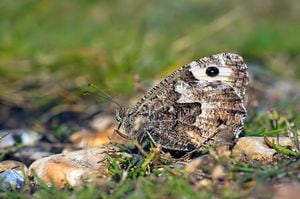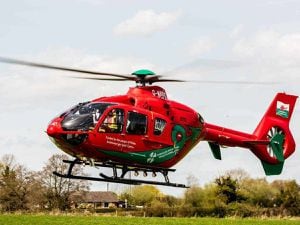Rising numbers for rare Shropshire butterfly
One of Shropshire's rarest butterflies could be growing in numbers, experts believe.

The grayling butterfly can be found across Britain mainly in coastal areas.
In the West Midlands, it can only be spotted in certain parts of Shropshire and Worcestershire.
Stephen Lewis, warden of Prees Heath Common Reserve near Whitchurch, said the species had seen a decline but work is being done to improve habitats for grayling butterflies.
The species is a master of disguise and although conspicuous in flight they are so perfectly camouflaged against the bare earth and stones they can disappear upon landing.
Although primarily a coastal species, they can be found inland around The Bog and Stiperstones area in Shropshire.
The species can also be found near to the top of Earl's Hill, near Pontesbury.
Mr Lewis said: "It's not very common to see them inland.
"Here in Shropshire there are a number of places you can see it. "It likes dry, sparse, stony grassland.
"This year they have been seen in very good numbers. Last week we saw 18 on Earl's Hill.
"They are well camouflaged and very difficult to spot.
"The species has been decreasing but this is a good year for them."
He said a rise in the grayling butterfly could be associated with the weather.
Mr Lewis said: "The weather has been pretty good. It's a good year for a lot of butterfly species. "The grayling butterfly is one of the rarest butterflies in the county, but a lot of work has been done to improve the habitat for them by clearing away brambles and small bushes.
"We would encourage people to go out into their gardens and parks and count the butterflies. They can enter the information onto the Big Butterfly Count website.
"The more records we have, the more we can tell what is happening to butterflies."
Visit the website at www.bigbutterflycount.org
The grayling butterfly appears larger in flight when pale yellow-orange bands can be seen.
Cryptic colouring provides the grayling with excellent camouflage, making it difficult to see when at rest on bare ground, tree trunks or stones.
The wings are kept closed when not in flight and the forewings are usually tucked behind the hind wings, concealing the eyespots and making the butterfly appear smaller.





